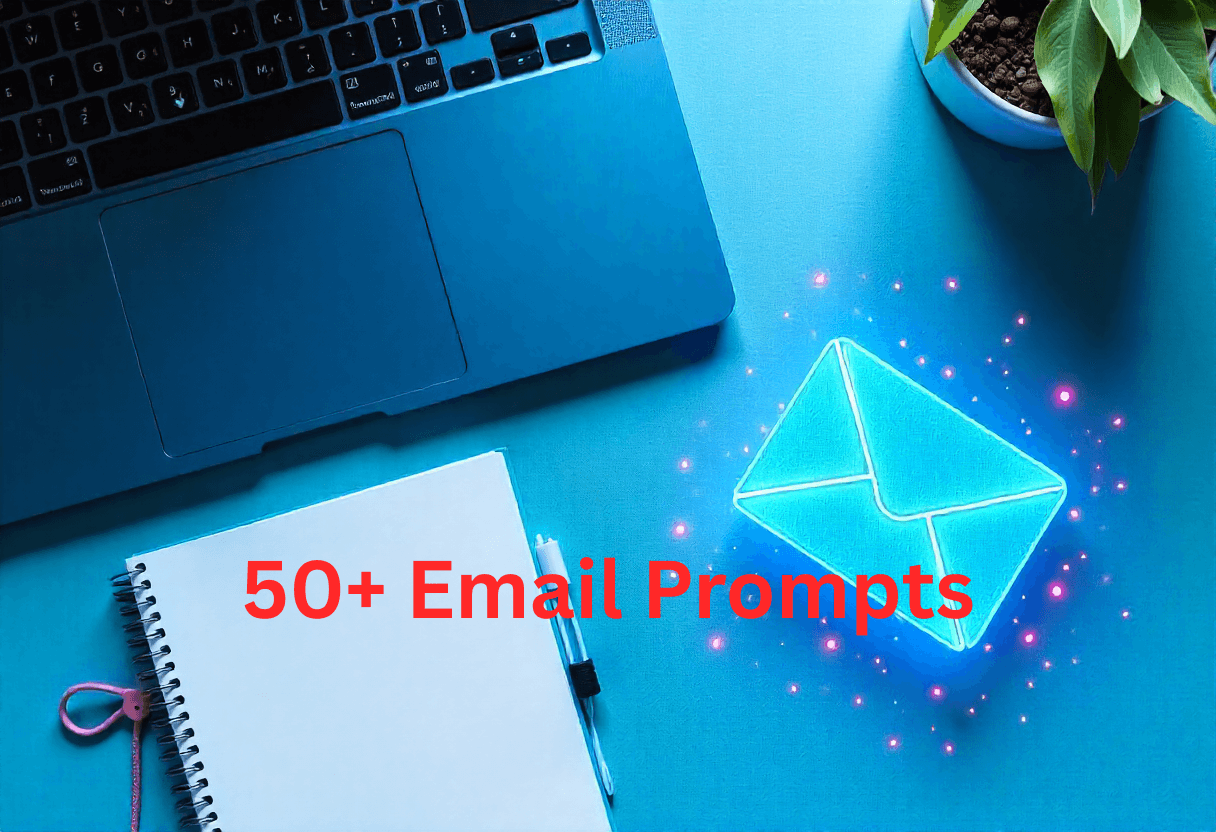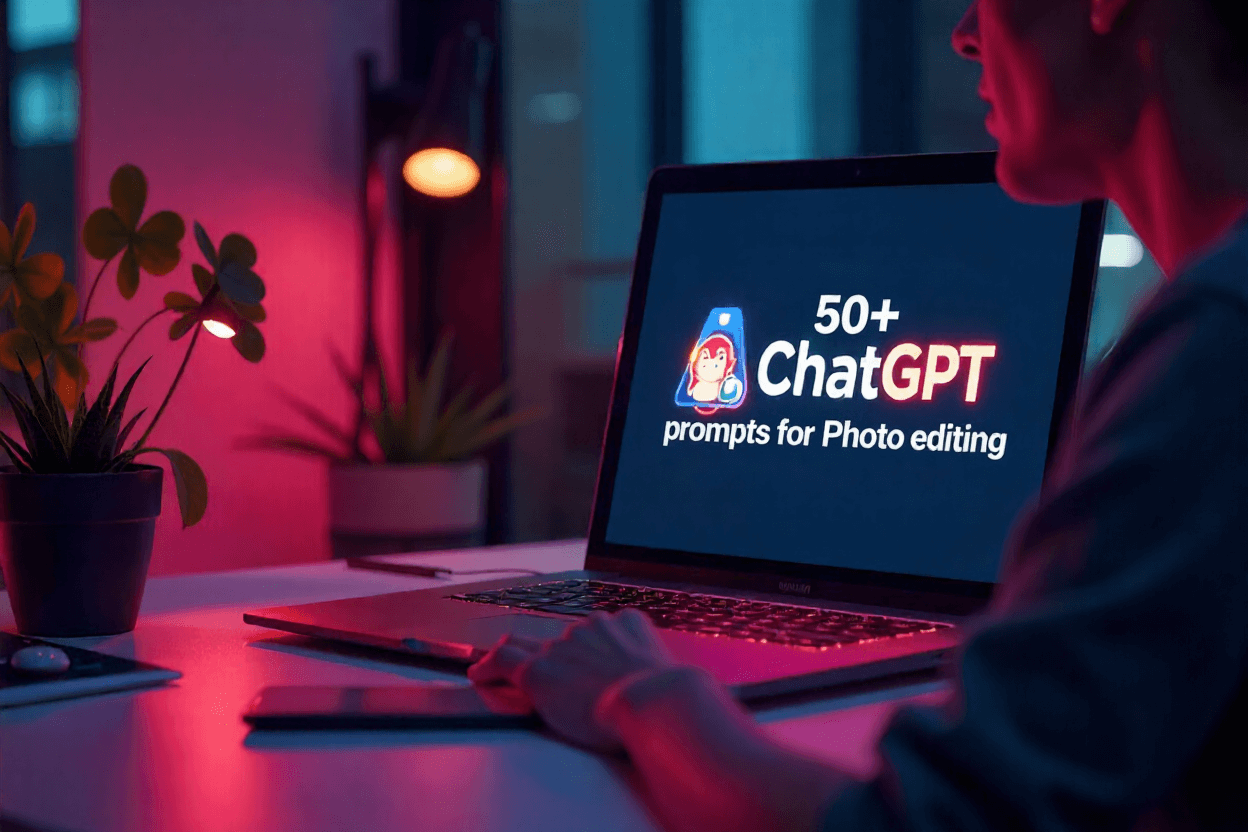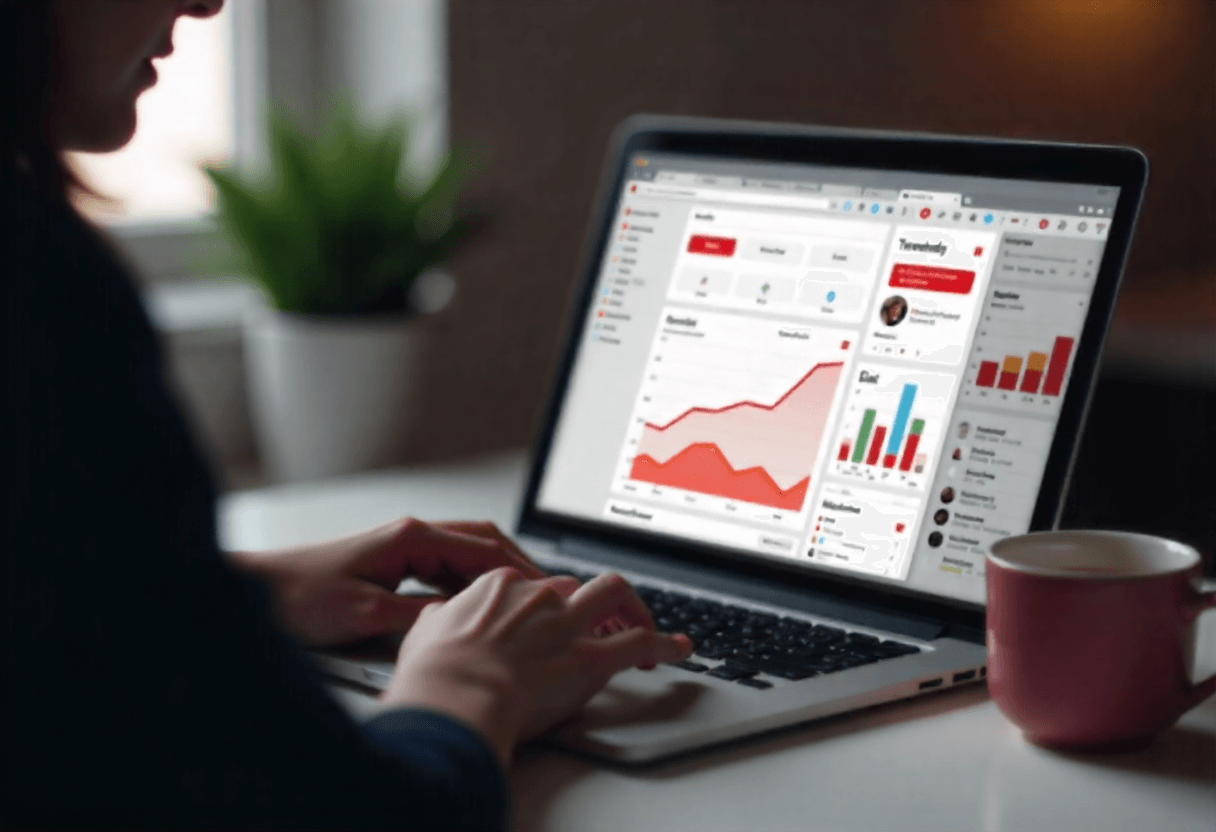
YouTube has evolved from a simple video-sharing platform into the world’s second-largest search engine, with over 2 billion monthly active users spending more than 1 billion hours watching videos daily. In 2025, businesses that ignore YouTube marketing campaigns are essentially leaving money on the table.
The power of video marketing has never been more evident. Companies using YouTube marketing campaigns report 49% faster revenue growth compared to those that don’t. Whether you’re a small business owner, startup founder, or marketing team leader, understanding how to create strategic YouTube campaigns can transform your brand visibility, lead generation, and customer acquisition.
This comprehensive guide will walk you through everything you need to know about launching successful YouTube marketing campaigns. From defining your campaign objectives to tracking performance and optimizing for maximum ROI, you’ll discover the exact blueprint top brands use to dominate on YouTube.
We’ll cover both organic campaign strategies and paid YouTube ad campaigns, ensuring you have the complete toolkit regardless of your budget. By the end of this guide, you’ll have actionable insights to create campaigns that not only engage your audience but drive real business results.
New to YouTube marketing? Start with our beginner’s guide to YouTube Marketing Strategies to build your foundation before diving into campaign creation.
What Is a YouTube Marketing Campaign and Why Should You Care?
A YouTube marketing campaign is a coordinated series of videos and promotional activities designed to achieve specific business objectives over a defined period. Unlike random video uploads, campaigns follow a strategic approach with clear messaging, consistent branding, and measurable goals.
Think of it as the difference between throwing spaghetti at the wall and conducting a symphony. Individual videos might perform well, but campaigns create momentum, build brand recognition, and guide viewers through your marketing funnel systematically.
Types of YouTube Marketing Campaigns
Paid Ad Campaigns leverage YouTube’s advertising platform to reach specific audiences through:-
- Skippable in-stream ads (TrueView)
- Non-skippable ads (bumper ads)
- Discovery ads (appearing in search results)
- YouTube Shorts ads
Organic Content Series focus on building audience through:
- Educational video series
- Product launch sequences
- Behind-the-scenes content
- Customer success stories
Hybrid Campaigns combine both approaches, using organic content to build trust while paid ads amplify reach and target specific demographics.
Why YouTube Marketing Campaigns Matter for Your Business
Massive Reach Potential: YouTube’s global audience means your campaigns can reach virtually any demographic, with users spanning every age group, income level, and geographic location.
Superior Engagement Rates: Video content generates 1200% more shares than text and images combined. YouTube campaigns consistently outperform other social media platforms in terms of engagement depth and duration.
Enhanced Brand Visibility: Consistent campaign presence builds brand recognition faster than sporadic posting. The YouTube algorithm rewards channels that publish regularly and maintain viewer engagement.
Lead Generation Powerhouse: Well-structured campaigns can generate high-quality leads through strategic calls-to-action, email captures, and funnel integration. B2B companies report 43% more leads when incorporating video campaigns.
SEO Benefits: YouTube videos rank in Google search results, giving your campaigns dual platform visibility. Properly optimized campaign videos can dominate search results for your target keywords.
Cost-Effective Marketing: Compared to traditional advertising, YouTube campaigns offer better ROI, especially for small businesses. You can start with minimal budgets and scale based on performance.
What Should You Define Before You Start a Campaign?
Success in YouTube marketing campaigns starts with crystal-clear objectives. Without defined goals, you’re essentially creating content in the dark, hoping something sticks. Let’s break down the essential elements you must establish before filming your first video.
Clarify Your Campaign Goal
Brand Awareness Campaigns focus on introducing your business to new audiences. Your primary metrics will be reach, impressions, and view duration. These campaigns typically feature:
- Company story videos
- Industry education content
- Brand personality showcases
- Community engagement initiatives
Lead Generation Campaigns capture prospect information through strategic calls-to-action. Key metrics include email sign-ups, form submissions, and qualified lead volume. These campaigns feature:
- Educational content with downloadable resources
- Free trial promotions
- Consultation bookings
- Newsletter sign-up incentives
Sales Conversion Campaigns directly drive revenue through product promotions, testimonials, and purchase incentives. Success is measured by conversion rates, revenue attribution, and customer acquisition cost. These campaigns showcase:
- Product launches
- Customer testimonials
- Limited-time offers
- Detailed product comparisons
Define Your Target Audience
Understanding your audience goes beyond basic demographics. You need to identify their pain points, content preferences, viewing habits, and stage in the buyer’s journey.
Create Detailed Buyer Personas that include:
- Demographics (age, location, income, job title)
- Psychographics (interests, values, challenges)
- YouTube behavior (preferred content types, viewing times)
- Purchase decision factors
- Preferred communication style
Analyze Your Current Audience using YouTube Analytics to understand:
- Who’s already watching your content
- Which videos resonate most
- When your audience is most active
- What topics generate the most engagement
Research Competitor Audiences to identify:
- Gaps in market coverage
- Successful content themes
- Engagement patterns
- Collaboration opportunities
Decide Between Paid vs Organic Content Strategy
Organic Campaign Strategy works best when you have:
- Limited budget but abundant time
- Strong content creation capabilities
- Existing audience base to build from
- Long-term brand building goals
- Unique expertise or perspective to share
Paid Campaign Strategy is ideal when you need:
- Immediate results and visibility
- Precise audience targeting
- Scalable lead generation
- Competitive market penetration
- Time-sensitive promotions
Hybrid Campaign Strategy combines both approaches by:
- Using organic content to build trust and authority
- Amplifying best-performing organic videos with paid promotion
- Creating paid ads that drive traffic to organic content
- Building email lists through organic content for paid retargeting
The most successful YouTube marketing campaigns often use hybrid strategies, starting with organic content to test messaging and audience response, then scaling winning concepts through paid promotion.
Also read: YouTube Marketing Tips for Growing a New Channel in 2025
What Type of Videos Work Best for Marketing Campaigns?
Video format selection can make or break your YouTube marketing campaign. Different video types serve different purposes in your marketing funnel, and understanding which formats work best for your objectives is crucial for campaign success.
Educational and Explainer Videos
How-to Tutorials consistently rank among the most-watched content on YouTube. These videos work exceptionally well for campaigns because they:
- Establish your expertise and authority
- Provide genuine value to viewers
- Generate high engagement and shares
- Build trust before selling
Successful tutorial campaigns often create series around related topics, keeping viewers engaged across multiple videos. For example, a marketing software company might create a series on “Email Marketing Mastery” with 5-7 interconnected videos.
Industry Education Content positions your brand as a thought leader while addressing common customer questions. These videos perform well because they:
- Target high-intent search queries
- Build long-term brand authority
- Generate consistent organic traffic
- Create opportunities for internal linking
Product-Focused Campaign Videos
Product Demonstrations showcase your offering in action, addressing potential customer objections and highlighting key benefits. Effective product demo campaigns:
- Show real-world usage scenarios
- Compare features with competitors
- Include customer testimonials
- Provide clear next steps for interested viewers
Launch Teasers and Announcements create anticipation and buzz around new products or services. These campaigns work best when they:
- Build suspense over multiple videos
- Offer exclusive previews to subscribers
- Include behind-the-scenes content
- Provide early access opportunities
Social Proof and Testimonial Videos
Customer Success Stories leverage social proof to build credibility and trust. These videos are particularly effective for B2B campaigns because they:
- Showcase real results and ROI
- Address specific use cases
- Build emotional connections
- Provide proof of concept for prospects
Case Studies dive deep into specific customer transformations, providing detailed analysis of challenges, solutions, and results. These campaigns work well for:
- High-consideration purchases
- B2B sales cycles
- Complex products or services
- Industries requiring social proof
Campaign Video Examples from Successful Brands
Canva’s Design School Series demonstrates how educational content can drive business results. Their campaign strategy includes:
- Weekly design tutorials
- Template showcases
- Design trend analysis
- User-generated content features
This approach has helped Canva build a community of over 100 million users while establishing themselves as the go-to design education resource.
HubSpot’s Marketing Library showcases comprehensive campaign strategy through:
- In-depth marketing tutorials
- Tool demonstrations
- Industry expert interviews
- Customer success spotlights
Their consistent publishing schedule and high-quality content have made them a trusted resource for marketers worldwide.
Ahrefs’ YouTube Channel proves that even technical products can succeed with the right campaign approach:
- SEO tutorial series
- Tool walkthroughs
- Industry research presentations
- Competitive analysis content
Their educational-first approach has generated millions of views while driving significant trial sign-ups and conversions.
How Do You Script and Structure Your Campaign Videos?
The structure of your campaign videos determines whether viewers stay engaged or click away within the first few seconds. A well-crafted script follows proven frameworks while adapting to your unique brand voice and campaign objectives.
The AIDA Framework for Campaign Videos
Attention (Hook) – The first 3-5 seconds are critical. Your hook must immediately communicate value or create curiosity. Effective hooks include:
- Surprising statistics or facts
- Provocative questions
- Bold statements or claims
- Visual demonstrations
- Common problem identification
Example: “95% of businesses fail at YouTube marketing because they make this one crucial mistake…”
Interest (Problem) – Once you have attention, define the problem your audience faces. This section should:
- Resonate with viewer pain points
- Provide specific examples
- Build emotional connection
- Establish the stakes of not solving the problem
Desire (Solution) – Present your solution, product, or approach as the answer to their problem. This section should:
- Clearly explain your unique value proposition
- Provide evidence or social proof
- Show transformation or results
- Address potential objections
Action (CTA) – End with a clear, specific call-to-action that moves viewers to the next step. Effective CTAs:
- Tell viewers exactly what to do
- Explain the benefit of taking action
- Create urgency when appropriate
- Provide multiple engagement options
Balancing Short-Form and Long-Form Content
YouTube Shorts Integration in campaigns provides:
- Increased discovery potential
- Quick value delivery
- Repurposing opportunities
- Mobile-first audience reach
Successful campaigns often use Shorts as teasers or highlights from longer videos, driving traffic to comprehensive content while maximizing reach.
Long-Form Video Benefits include:
- Deep relationship building
- Comprehensive education
- Higher ad revenue potential
- Algorithm preference for watch time
The optimal campaign strategy uses both formats strategically, with Shorts attracting new viewers and long-form content converting them into loyal followers.
Script Templates and Frameworks
PAS Framework (Problem-Agitate-Solution):
- Problem: Identify the challenge your audience faces
- Agitate: Amplify the consequences of not solving it
- Solution: Present your approach as the answer
HIVE Model (Hook-Inform-Value-Engage):
- Hook: Grab attention immediately
- Inform: Provide educational content
- Value: Deliver actionable insights
- Engage: Include interactive elements or questions
The Story Arc Structure: –
- Setup: Introduce the scenario or challenge
- Conflict: Present obstacles or complications
- Resolution: Show how challenges were overcome
- Lesson: Extract actionable insights for viewers
Script Optimization Tips
Write Conversationally as if speaking to a friend. This approach increases engagement and builds stronger connections with your audience.
Include Pattern Interrupts every 10-15 seconds to maintain attention. These can be:
- Visual changes or graphics
- Tone shifts or emphasis
- Questions directed at the audience
- Sudden topic transitions
Plan for Engagement by including:
- Questions that encourage comments
- Polls or surveys
- Challenges or assignments
- Requests for viewer opinions
Optimize for Mobile Viewing since over 70% of YouTube watch time occurs on mobile devices. This means:
- Larger text and graphics
- Clear audio quality
- Simple visual compositions
- Shorter sentences and concepts
Also read: How to Build a YouTube Marketing Plan That Actually Works
Where Should You Host and Publish Your Campaign Videos?
The platform and hosting strategy you choose for your YouTube marketing campaign significantly impacts its reach, engagement, and overall success. Your decision should align with your campaign objectives, target audience, and available resources.
Your Brand Channel Strategy
Establishing Your Brand Hub makes your YouTube channel the central destination for your campaign content. This approach offers several advantages:
- Complete control over branding and messaging
- Ability to build a subscriber base
- Revenue generation through monetization
- Long-term asset building for your business
Channel Optimization for campaign success includes:
- Consistent visual branding across thumbnails
- Organized playlists for campaign series
- Channel trailer that explains your value proposition
- Regular publishing schedule that builds anticipation
Content Organization should make it easy for viewers to find related campaign videos:
- Create dedicated playlists for each campaign
- Use consistent naming conventions
- Include campaign-specific channel sections
- Link related videos through cards and end screens
Partner and Influencer Collaboration Strategy
Influencer Partnership Campaigns can exponentially increase your reach by leveraging established audiences. Successful collaboration strategies include:
- Identifying influencers whose audience aligns with your target market
- Creating authentic content that adds value to their audience
- Establishing clear expectations and deliverables
- Measuring performance across both channels
Guest Appearances on other channels can introduce your brand to new audiences:
- Podcast interviews in your industry
- Expert roundtables or panel discussions
- Collaborative tutorial or educational content
- Cross-promotional campaign partnerships
Channel Takeovers allow you to temporarily manage another channel’s content, providing:
- Access to established audiences
- Credibility through association
- Unique content opportunities
- Mutual benefit for both parties
Paid Advertising Placement Strategy
YouTube Ads Manager provides sophisticated targeting options for campaign amplification:
- Demographic targeting (age, gender, location)
- Interest-based targeting (hobbies, lifestyle, preferences)
- Behavioral targeting (past purchases, search history)
- Remarketing to previous website visitors
Ad Format Selection depends on your campaign goals:
- Skippable In-Stream Ads work well for brand awareness and engagement
- Non-Skippable Ads ensure message delivery but may impact user experience
- Discovery Ads appear in search results and suggested videos
- Bumper Ads provide quick, memorable brand messages
Budget Allocation should balance organic and paid strategies:
- Start with organic content to test messaging
- Amplify successful organic videos with paid promotion
- Use paid ads to drive traffic to organic content
- Allocate budget based on campaign phase and objectives
Cross-Platform Integration
Website Integration connects your YouTube campaign to your broader marketing ecosystem:
- Embed campaign videos on relevant landing pages
- Create dedicated campaign pages with video content
- Use videos in email marketing campaigns
- Include video content in blog posts and articles
Social Media Distribution extends your campaign reach:
- Share teaser clips on other social platforms
- Create platform-specific versions of campaign content
- Use video content in social media advertising
- Encourage user-generated content around your campaign
Email Marketing Integration nurtures leads generated through your campaign:
- Include campaign videos in email sequences
- Create video-based email campaigns
- Use video thumbnails to increase email open rates
- Segment email lists based on video engagement
How Do You Promote Your Campaign Beyond Just Uploading?
Creating great video content is only half the battle. The most successful YouTube marketing campaigns combine exceptional content with strategic promotion across multiple channels and touchpoints. Your promotion strategy often determines whether your campaign reaches hundreds or hundreds of thousands of viewers.
Email Marketing Integration
Email Subscriber Notifications should go beyond simple upload announcements. Effective email promotion includes:
- Teaser content that builds anticipation
- Behind-the-scenes insights from video creation
- Key takeaways or summaries for busy subscribers
- Exclusive bonus content linked to the video
Segmented Email Campaigns based on viewer behavior can dramatically improve engagement:
- Send different messages to new vs. returning subscribers
- Create special sequences for highly engaged viewers
- Target specific segments with relevant campaign content
- Use behavioral triggers to send timely video recommendations
Video-Driven Email Sequences can nurture leads generated through your campaign:
- Welcome series featuring your best campaign content
- Educational sequences that build on campaign themes
- Product demonstration series for interested prospects
- Customer success stories that support campaign messaging
Content Marketing and Blog Integration
Blog Post Amplification extends your campaign reach while improving SEO:
- Embed campaign videos in relevant blog articles
- Create companion blog posts that expand on video content
- Develop comprehensive guides that reference campaign videos
- Use blog content to provide additional resources mentioned in videos
SEO-Optimized Video Pages can help your campaign content rank in search results:
- Create individual landing pages for important campaign videos
- Optimize page titles and descriptions for target keywords
- Include video transcripts for better search visibility
- Add schema markup to improve rich snippet appearance
Guest Content Opportunities can introduce your campaign to new audiences:
- Write guest posts for industry publications
- Participate in expert roundups and interviews
- Contribute to industry newsletters and publications
- Share insights from your campaign on other platforms
Paid Advertising Amplification
YouTube Ads Strategy should complement, not replace, organic promotion:
- Use TrueView ads to promote your best-performing campaign videos
- Create custom audiences based on website visitors or email subscribers
- Develop lookalike audiences based on your most engaged viewers
- Test different ad formats to find what works best for your content
Cross-Platform Advertising extends your campaign reach:
- Use Facebook and Instagram ads to drive YouTube traffic
- Create LinkedIn campaigns targeting professional audiences
- Develop Google Ads campaigns that include video extensions
- Test Twitter promotion of your campaign content
Retargeting Campaigns can re-engage viewers who didn’t convert:
- Create custom audiences based on video engagement levels
- Develop specific ads for viewers who watched partial videos
- Target website visitors with your campaign content
- Use email lists to create retargeting audiences
Community Building and Engagement
YouTube Community Features can increase campaign engagement:
- Use Community posts to share behind-the-scenes content
- Create polls related to your campaign topics
- Share user-generated content and testimonials
- Announce upcoming campaign videos to build anticipation
Social Media Community Management extends your campaign conversation:
- Share campaign highlights across all social platforms
- Engage with comments and shares on social media
- Create platform-specific content that drives YouTube traffic
- Use social listening to identify campaign-related conversations
Influencer and Partnership Promotion can exponentially increase reach:
- Collaborate with industry influencers on campaign promotion
- Partner with complementary businesses for cross-promotion
- Participate in industry events and conferences
- Guest on podcasts and other video shows
Performance-Based Promotion Optimization
A/B Testing different promotion strategies helps optimize your approach:
- Test different email subject lines and send times
- Compare social media post formats and timing
- Experiment with various ad copy and creative approaches
- Analyze which promotion channels drive the highest-quality traffic
Data-Driven Promotion Decisions ensure you’re investing time and money effectively:
- Track which promotion channels drive the most engagement
- Analyze the quality of traffic from different sources
- Measure conversion rates from various promotion methods
- Adjust promotion budgets based on performance data
How Can You Track the Performance of Your YouTube Campaign?
Measuring the success of your YouTube marketing campaign requires a comprehensive approach to analytics that goes beyond simple view counts. The most successful campaigns track multiple metrics across different platforms and tie video performance directly to business outcomes.
Essential YouTube Analytics Metrics
Engagement Metrics reveal how well your content resonates with viewers:
- Click-Through Rate (CTR) measures how compelling your thumbnails and titles are
- Average View Duration indicates content quality and viewer interest
- Audience Retention Graphs show exactly where viewers lose interest
- Engagement Rate (likes, comments, shares) demonstrates content value
Discovery Metrics help you understand how viewers find your content:
- Traffic Sources reveal which promotion strategies work best
- Search Terms show what keywords drive organic discovery
- Suggested Video Performance indicates content relevance
- External Traffic tracks clicks from other websites and social media
Subscriber Growth Metrics measure long-term audience building:
- Subscriber Acquisition Rate from specific videos
- Subscriber Retention over time
- Subscriber Engagement compared to non-subscribers
- Subscriber Demographics to understand audience composition
Google Analytics Integration
UTM Parameter Tracking connects YouTube traffic to website behavior:
- Track specific videos driving website traffic
- Measure conversion rates from YouTube visitors
- Analyze user behavior patterns from video traffic
- Calculate customer acquisition costs from YouTube campaigns
Goal and Conversion Tracking ties video performance to business outcomes:
- Set up goals for email sign-ups, demo requests, or purchases
- Track multi-touch attribution from YouTube to conversion
- Measure lifetime value of customers acquired through YouTube
- Calculate return on investment for campaign spending
Enhanced Ecommerce Tracking for businesses selling products:
- Track product views driven by YouTube traffic
- Measure shopping cart additions from video viewers
- Analyze purchase completion rates
- Calculate revenue attribution to specific videos
Campaign-Level Performance Analysis
Funnel Metrics show how viewers progress through your campaign:
- Awareness Stage: Views, impressions, reach
- Consideration Stage: Engagement, click-through rates, website visits
- Conversion Stage: Leads generated, sales completed, email sign-ups
Content Performance Comparison helps identify successful patterns:
- Compare performance across different video types
- Analyze which topics generate the most engagement
- Identify optimal video lengths for your audience
- Determine best publishing times and frequencies
Audience Insights reveal who your campaign is reaching:
- Demographic breakdown of engaged viewers
- Geographic performance analysis
- Device and platform usage patterns
- Viewing time and behavior analysis
Advanced Tracking Strategies
Custom Dashboards provide at-a-glance performance monitoring:
- Combine YouTube Analytics with Google Analytics data
- Create automated reports for stakeholders
- Set up alerts for significant performance changes
- Track competitor performance alongside your own
Heat Map Analysis for longer videos shows:
- Exact moments when viewers disengage
- Sections with highest replay rates
- Optimal placement for calls-to-action
- Content pacing effectiveness
Cohort Analysis tracks viewer behavior over time:
- How new subscribers engage with your content
- Retention rates for different audience segments
- Long-term value of viewers from specific campaigns
- Seasonal patterns in campaign performance
ROI Calculation and Business Impact
Cost Per Acquisition analysis helps optimize campaign spending:
- Calculate cost per view, click, and conversion
- Compare organic vs. paid campaign performance
- Identify most cost-effective content types
- Optimize budget allocation across campaign elements
Lifetime Value Tracking measures long-term campaign success:
- Track customer value over extended periods
- Measure retention rates for YouTube-acquired customers
- Calculate referral value from satisfied customers
- Analyze repeat purchase behavior
Brand Awareness Metrics for campaigns focused on visibility:
- Brand mention tracking across social platforms
- Direct traffic increases following campaign launch
- Brand search volume changes
- Social media follower growth correlation
How Do You Adjust Your Campaign if It’s Not Performing Well?
Even the most carefully planned YouTube marketing campaigns sometimes underperform. The key to long-term success is recognizing performance issues early and implementing strategic adjustments quickly. The most successful marketers treat underperforming campaigns as learning opportunities that inform future strategy.
Quick Optimization Tactics
Title and Thumbnail Optimization can dramatically improve performance within hours:
- A/B test different thumbnail designs focusing on contrast, facial expressions, and text overlay
- Rewrite titles to include more compelling hooks or trending keywords
- Test different title lengths and formats
- Analyze competitor titles for similar content to identify successful patterns
Description and Tags Enhancement improves discoverability:
- Expand video descriptions with more comprehensive keyword coverage
- Add relevant tags that align with current search trends
- Include timestamps for longer videos to improve user experience
- Update descriptions with current information and links
End Screen and Card Optimization can increase campaign cohesion:
- Update end screens to promote your best-performing campaign videos
- Add cards at strategic moments to drive traffic to related content
- Create stronger calls-to-action that guide viewers to next steps
- Test different card placements and messaging
Content Repurposing and Redistribution
YouTube Shorts Creation from existing content can increase reach:
- Extract key moments from longer videos
- Create teaser content that drives traffic to full videos
- Develop quick tips or highlights from comprehensive content
- Test different Shorts formats to find what resonates
Platform-Specific Adaptations extend campaign reach:
- Create Instagram Reels from YouTube content
- Develop LinkedIn video posts for professional audiences
- Share Twitter video clips with compelling captions
- Post Facebook video content optimized for that platform’s algorithm
Email Marketing Integration can boost engagement:
- Send personalized video recommendations to subscribers
- Create email sequences featuring underperforming content
- Use email to drive traffic to specific campaign videos
- Survey subscribers about content preferences
Audience Targeting Adjustments
Demographic Refinement can improve campaign relevance:
- Analyze current audience data to identify high-engagement segments
- Adjust targeting to focus on most responsive demographics
- Expand targeting to include similar audience characteristics
- Test different geographic targeting approaches
Interest-Based Targeting Updates can reach more qualified viewers:
- Research trending topics in your industry
- Adjust keyword targeting based on search data
- Expand interest categories to include related topics
- Test different audience personas with targeted content
Behavioral Targeting Optimization improves campaign efficiency:
- Target viewers who have engaged with similar content
- Create lookalike audiences based on high-value customers
- Retarget website visitors with specific video content
- Segment audiences based on previous campaign interactions
Strategic Campaign Pivots
Content Format Changes can revitalize underperforming campaigns:
- Convert educational content to entertainment format
- Transform product-focused videos into problem-solving content
- Develop series-based content from standalone videos
- Create interactive content that encourages participation
Timing and Frequency Adjustments optimize for audience behavior:
- Analyze audience activity patterns to identify optimal posting times
- Test different publishing frequencies
- Adjust campaign pacing based on audience engagement
- Consider seasonal factors affecting performance
Partnership and Collaboration Opportunities can expand reach:
- Identify influencers or brands for collaboration
- Guest on other channels to promote campaign content
- Participate in industry events or online discussions
- Cross-promote with complementary businesses
Data-Driven Adjustment Strategies
Performance Attribution Analysis identifies specific improvement areas:
- Determine which campaign elements drive the most engagement
- Identify content themes that resonate most with your audience
- Analyze traffic sources to optimize promotion strategies
- Track conversion paths to improve campaign funnels
Competitor Analysis provides adjustment insights:
- Study successful campaigns in your industry
- Identify content gaps you can fill
- Analyze competitor audience engagement strategies
- Test successful competitor tactics adapted to your brand
Seasonal and Trend Adjustments keep campaigns relevant:
- Incorporate current events or trending topics
- Adjust messaging for seasonal relevance
- Capitalize on viral trends when appropriate
- Update content to reflect industry changes
Long-Term Campaign Evolution
Audience Feedback Integration improves campaign relevance:
- Regularly survey your audience about content preferences
- Monitor comments for content suggestions and feedback
- Create content based on frequently asked questions
- Develop videos that address common customer concerns
Performance Benchmarking guides strategic improvements:
- Set realistic performance benchmarks based on industry standards
- Track improvement over time rather than absolute performance
- Compare campaign performance to previous efforts
- Identify successful patterns for future campaign development
Content Library Development builds on campaign learnings:
- Create comprehensive content libraries around successful topics
- Develop signature content formats that consistently perform
- Build evergreen content that provides long-term value
- Establish content pillars that guide future campaign development
What Does a Simple YouTube Campaign Funnel Look Like?
A well-structured YouTube campaign funnel guides viewers through a logical progression from initial awareness to final conversion. The most successful campaigns create multiple touchpoints that build trust, provide value, and naturally lead prospects toward your business objectives.
The Three-Stage Campaign Funnel
Stage 1: Awareness (Top of Funnel) The awareness stage introduces your brand to potential customers who may not know they have a problem or that solutions exist. Content at this stage should be:
- Educational and informative rather than promotional
- Focused on industry trends, common challenges, or general education
- Optimized for discovery through search and suggested videos
- Designed to build authority and trust
Example awareness video topics:
- “The 5 Biggest Challenges Facing Small Business Owners in 2025”
- “Why Traditional Marketing Doesn’t Work Anymore”
- “Industry Trends Every Business Leader Should Know”
Stage 2: Consideration (Middle of Funnel) The consideration stage targets viewers who understand their problem and are evaluating solutions. These videos should:
- Demonstrate your expertise and unique approach
- Compare different solutions or methodologies
- Include social proof and testimonials
- Provide detailed information about your process or product
Example consideration video topics:
- “How [Your Company] Helped [Client] Achieve [Specific Result]”
- “The Ultimate Guide to [Solution Category]”
- “Why [Your Approach] Works Better Than [Alternative Approach]”
Stage 3: Conversion (Bottom of Funnel) Conversion-focused videos target viewers ready to make a decision. These videos should:
- Address final objections and concerns
- Provide clear next steps and strong calls-to-action
- Offer incentives or limited-time opportunities
- Include detailed case studies and success stories
Example conversion video topics:
- “Complete [Product] Demo and Setup Tutorial”
- “How [Specific Client] Achieved [Impressive Result] in [Timeframe]”
- “Special Offer: [Compelling Incentive] for [Target Audience]”
Funnel Connection Strategies
YouTube Cards and End Screens create seamless transitions between funnel stages:
- Use cards to link to relevant next-stage videos during content
- Design end screens that recommend appropriate follow-up content
- Create playlists that guide viewers through the complete funnel
- Use annotations sparingly to avoid disrupting the viewing experience
Pinned Comments Strategy provides additional engagement opportunities:
- Pin comments that ask questions relevant to the next funnel stage
- Include links to relevant resources or landing pages
- Encourage viewers to share their experiences or challenges
- Provide additional value through comment interactions
Video Descriptions with Strategic CTAs guide viewers to appropriate next steps:
- Include stage-appropriate calls-to-action in video descriptions
- Link to relevant landing pages, resources, or contact forms
- Provide timestamps for easy navigation within longer videos
- Include social proof and testimonials in descriptions
Email Integration and Follow-Up
Lead Magnets at Each Stage capture viewer information:
- Awareness stage: Industry reports, trend analysis, or educational guides
- Consideration stage: Comparison guides, templates, or assessment tools
- Conversion stage: Free trials, consultations, or exclusive offers
Email Sequences Based on Video Engagement nurture leads effectively:
- Send different email sequences based on which videos viewers watch
- Include video content in email campaigns to maintain engagement
- Use email to provide additional resources mentioned in videos
- Create personalized recommendations based on viewing behavior
Retargeting Campaigns re-engage viewers who don’t immediately convert:
- Create custom audiences based on video completion rates
- Develop specific ads for viewers who watched consideration-stage content
- Use email lists to create retargeting audiences for social media
- Test different messaging approaches for different audience segments
Funnel Optimization and Improvement
Analytics-Driven Funnel Refinement improves conversion rates:
- Track viewer progression through different funnel stages
- Identify where viewers typically drop off in the funnel
- A/B test different video sequences and calls-to-action
- Optimize based on conversion data rather than just engagement metrics
Content Gap Analysis ensures comprehensive funnel coverage:
- Identify missing content for specific funnel stages
- Develop content that addresses common objections or concerns
- Create bridge content that connects different funnel stages
- Test different content formats for various audience segments
Seasonal and Trend-Based Funnel Adjustments keep campaigns relevant:
- Update funnel content based on seasonal business cycles
- Incorporate trending topics that relate to your funnel stages
- Adjust messaging based on current market conditions
- Test new funnel approaches based on industry changes
Multi-Channel Funnel Integration
Website Integration connects video content to your primary conversion platform:
- Embed funnel videos on relevant website pages
- Create dedicated landing pages for each funnel stage
- Use video content to improve website conversion rates
- Implement tracking to measure video impact on website goals
Social Media Funnel Support extends reach across platforms:
- Share funnel content across relevant social media channels
- Create platform-specific versions of funnel videos
- Use social media to drive traffic to YouTube funnel content
- Develop social media campaigns that support funnel objectives
Sales Team Integration bridges marketing and sales efforts:
- Train sales teams on funnel content and messaging
- Use funnel videos in sales presentations and follow-up
- Create sales-specific video content for closing prospects
- Track how video content impacts sales conversations and close rates
Conclusion
Creating a successful YouTube marketing campaign requires strategic planning, consistent execution, and continuous optimization. The businesses that thrive on YouTube understand that success comes from treating video content as part of a comprehensive marketing system rather than isolated uploads.






